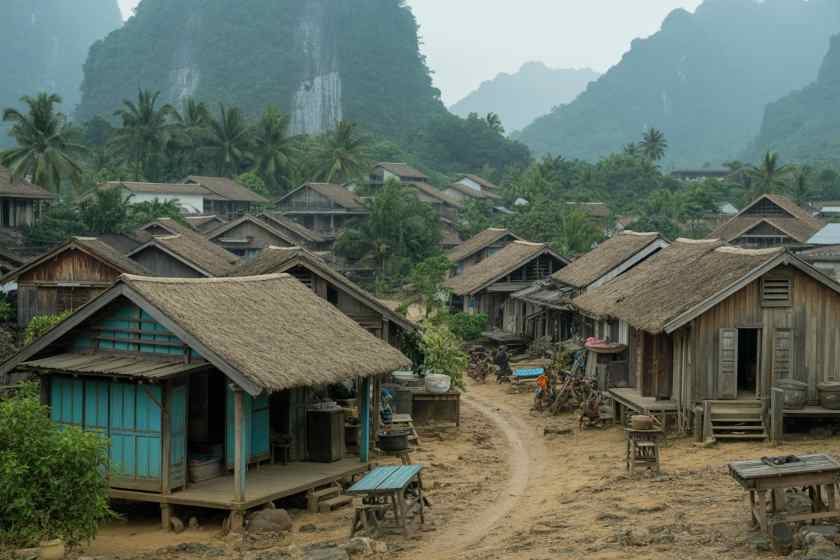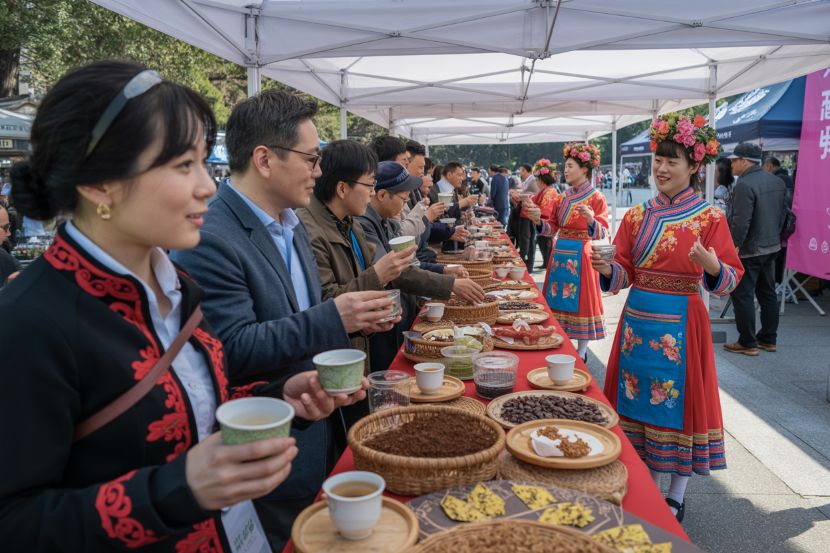Creativity development of tourism villages in Bandung Regency, Indonesia: co-creating sustainability and urban resilience

Currently, Indonesia is encouraging development through the development of tourist villages as an alternative choice to maintain sustainable economic development in remote/rural areas with involving various actors/sectors1,2. Interaction with other stakeholders, such as government, private, and community, is necessary to maintain sustainable economic development in rural areas in good governance3,4. The combination of these three factors—government, business, and society—does not, however, suffice to promote the development of tourism in light of the changing times5,6. Therefore, the role of other actors/sectors such as the environment, media, and higher education institutions is very important in supporting tourism development7. According to Hall and Williams8, it is crucial to recognize innovation as a crucial component of the entire tourism system given the changes in the business. Each development sector has an important role in promoting sustainability. Such as higher education can produce knowledge of innovation, the environment has resources that can be utilized in innovation, the media encourages participation in development, the industry provides economic resources and market potential to absorb innovation, and the government sets standards and innovation of incentive policies7,9,10.
Bandung Regency, Indonesia is one of the areas with the creative development of tourist villages in Indonesia, this is due to the Bandung Regency government program which launched the development of 100 tourist villages11,12. This program is recognized as an effort to exploit natural and cultural potentials, empower communities, and accelerate economic growth. According to a report from the Head of the Bandung Regency Government Disparbud, as many as 50 of the 100 targeted tourism villages have now been designated as pilot villages11,12. Until 2022, ten (10) villages have been designated as tourist villages through the Regent’s Decree11,12,13.
Referring to the Decree of the Regent of Bandung Regency Number 556.42/Kop7-Dispopar/2011, the ten tourism villages in question are Alam Endah Village, Gambung Village, Penundaan Village, Lebak Muncang Village, Lamajang Village, Jelekong, Ciburial Village, Cibolerang Village, Laksana Village, and Rawabogo Village11,12,13. The development of tourist villages can stimulate the economic growth of the surrounding community. Apart from that, there are problems that arise such as a lack of adequate infrastructure and accessibility. Many tourist villages are still difficult to reach by public transportation and lack basic facilities such as good roads, electricity, clean water and adequate sanitation which is a concern in the creative development of tourist villages in Bandung Regency, Indonesia11,12,13,14. According to Ying and Zhou1 and Qin et al.2 The problems of tourism village development can only be resolved through interaction between the right actors/sectors so that village sustainability and independence can be realized. In a news tracking report by Ripaldi12. it is stated that the Bandung Regency Government is seeking villages that do not have natural potential, to be developed into artificial tourism villages while continuing to encourage local cultural wisdom that exists in the area. Like culinary, cultural arts, and others, it is a part that needs to be developed11,12. Recognizing the importance of the foundation of sustainable tourism in every development of the tourist village. That’s why the Bandung Regency Government changed the way village development was carried out. Not top-down, but from community participation or desire. If the community’s desire is getting higher and stronger, it will be encouraged and carried out well together11,12. This is the empirical issue behind which this research was built to explain how actors/sectors interact in the creative development that is being pursued in Bandung Regency, Indonesia. This is explored through the conceptual approach of the Quintuple-Helix innovation model9.
A helix element is introducing the environment principle from Quintuple-Helix concepts to promote sustained inventive growth7,9,10. Carayannis et al.9 discuss the Quintuple-Helix innovation model as a framework for knowledge, innovation, and long-term competitive advantage. Quintuple-helix be considered as a driver of sustainable competitiveness and prosperity in an inventive development by including a fifth element, namely the natural environment7,9,10.
In addition, the media, along with the government, the private sector, higher education institutions, and the community, is a key component of the Penta-helix model and plays a significant role in the creative development that promotes the expansion of tourist villages14,15,16. Ayalew14 asserts that the media can aid in promoting tourism potential. Pentahelix is an addition to the triple-helix method that involves aspects of organizations and non-profit organizations to realize innovation, according to Muhyi et al.17. He continued by saying that the media is a stakeholder that is crucial for promoting and informing business, particularly company development. Additionally, the media is important in promoting local tourism, according to Sumarto et al.18. In order to improve tourist management, there must be interactions between the government, the tourism sector, academic institutions, local communities, the media, and the environment. To manage tourism villages more effectively, synergistic relationships between the six helixes should be developed17,18. The hilex concept has become a trend in regional development which is used by regional governments in Indonesia to encourage participatory and inclusive development by involving various actors/stakeholders14,15,16,17.
The research problem statement is how the government, the tourism industry, society, higher education institutions, the media, and the environment interact in tourism management and development of tourist villages in Bandung Regency, Indonesia, based on the background that has been explained. Based on the problem formulation, the researcher tried to study it in depth and comprehensively using a qualitative-explorative methodology approach, this is because this method chooses the advantage of exploring and interpreting critically and in depth the research cases studied which cannot be explained with numbers.
Various studies show that the management of tourism villages requires synergistic interaction of several elements which include the government, the tourism industry, higher education institutions, the media, the community, and the environment17,18,19,20. At the very least, interaction can help to improve the management of tourist villages. Triple-Helix focuses on conversations on innovation between higher education institutions, businesses, and the government. Media-based culture and the public are added as a fourth helix in the quadruple-helix model. The quintuple-helix combines the components of the quadruple-helix with the social environment’s natural surroundings, Penta-Helix has media components. The management of tourism villages in Bandung Regency improves and draws more visitors thanks to the government, the tourism sector, higher education institutions, the media, the community, and the environment that interact with one another. Finally, preserve sustainable economic development in rural areas while promoting the economic growth of the neighborhood. In managing a tourism village in Bandung Regency, Indonesia, this study focuses on the connections between the government, the tourism sector, higher education institutions, media, society, and the environment. This paper includes an introduction, methods, results and discussion, conclusions, and recommendations (the range of further research). Based on various previous studies, development principles in Indonesia tend to see the environment as an object of development and the penta helix concept is more often used in planning development programs and making development policies14,15,16,17,18,19,20, so the position of this research tries to explore the creative development being pursued in Bandung Regency by looking at the environment as a subject of development that is parallel to other helixes.
Objective
This study aims to explore the interactions between the government, the tourism industry, universities, media, society, and the environment in the management and utilization of tourist villages in Bandung Regency, Indonesia. This study examines how interaction between stakeholders can encourage the creative development of tourist villages so that they can create sustainability and resilience in Bandung Regency, Indonesia.
link






